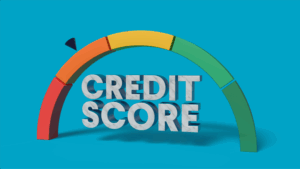
Your Credit Score: The Ultimate Beginner's Guide
Your Credit Score: Is It More Important Than You Realize?
Your credit score is not just a number, but rather a huge indication of your willingness to pay, in the world of American finance. Indeed, your credit score is the single most critical factor when it comes to whether you can buy a house, whether you can get that new car loan, and even when applying for that credit card you’ve been eyeing with all the sweet rewards. It affects the interest rates you will pay, the terms on your loans, and in some cases determines whether or not you can rent an apartment or get a certain job. This might sound like such a simple idea for a beginner, but, however, it might be intimidating to learn this basic concept that is important for creating a strong financial future. In this final guide, we break down what a credit score is, why it matters, and how to improve yours fast and for real.

What Is A Credit Score Anyway? A Simple Breakdown
A credit score, in its simplest form, is a three-digit number, often between 300 and 850 (some specialized scores might differ). It serves as a snapshot of your creditworthiness at a given point in time, and it is calculated by complex algorithms that digest information from your credit report. A credit report, which is kept by the three major credit agencies (Equifax, Experian and TransUnion), includes an in-depth record of your borrowing and payment history. Lenders rely on this score to get a fast assessment of your risk of lending you money. In general, a higher score means less risk, and you will be a more desirable borrower. It acts like a GPA for your finances: the higher the grade, the more doors will open for you.
Two Movers and Shakers: FICO and VantageScor
When people mention the phrase credit score, they are probably referring to a FICO® Score or a VantageScore®. Both are widely used and serve an almost similar function, but these are two distinct models.
The FICO score: This scoring model was developed by Fair Isaac Corporation and is the oldest and most widely used by lenders (the top 90% of lenders use a FICO Score). VantageScore is a relatively recent model that was created by all three credit bureaus together. Both scores stem from comparable underlying data from your credit report, but they assign different levels of importance to specific factors. So you probably already know that there is not only one single score and it may be slightly different based on what model is being used.
Decoding Your Diagnosis: The 5 Elements
Before you can increase your score, you need to know how it works. FICO and VantageScore models incorporate the same categories, but the specific weighting may differ. So here is what you will see when you log in: a summary of the primary factors impacting your score.
Payment History (Approx. 35% of FICO Score): The single most important factor by far. No matter what, it is of utmost importance to pay your bills on time, every single time. All of these can tank your score, especially if they are late payments, missed payments, bankruptcies or foreclosures. On the other hand, a long history of on-time payments strengthens the base.
For More Information: Amounts Owed / Credit Utilization (Approx. Credit utilization (30% of FICO Score): This is the percentage of your total credit limit that you actually use. This is typically stated as a ratio, and when expressed as a percentage, it is called your credit utilization ratio. So, if you have a $10,000 credit card and you use $3,000, you’re at 30% utilization. Personal finance gurus often cite that you should remain under the 30% threshold across all your revolving accounts. The number should be as low as possible, ideally below 10%.
Credit History Length (About Length of Credit History (15% of FICO Score): This includes the age of your oldest credit account, the age of your newest account, and the average age of all your accounts. It will typically show a longer credit history with responsible behavior, suggesting greater experience and stability as a borrower. If you have old credit accounts, don’t close them.
Credit Mix (Approx. Credit Diversity (10% of your FICO Score): Having a variety in the types of credit they are carrying can be a favorable sign for lenders, especially if they have a combination of revolving credit (credit cards) and installment credit (Mortgage, Auto Loan, Student Loans). Using a mix of credit can benefit your score if you demonstrate that you can handle each type responsibly. But please do not create new accounts just to add in diversity, this will develop on its own.
New Credit / Hard Inquiries (Approximate How much it affects your score (10% of FICO Score): If you open a new credit account (for example, a credit card or a loan), it usually triggers a “hard inquiry” on your credit report. Generally, a hard inquiry has a small, temporary impact on your score. But too many hard inquiries in a brief span can indicate greater risk to lenders since it can mean that you are hungry for credit or that you are assuming too much debt.
Beginner-Friendly Steps On How To Quickly Increase Your Credit Score
While it takes time and diligence to change your score into a better BAM card, a few key actions will get you quickly headed in the right direction:
Pay Every Bill On Time, Every Single Time — This one is simply not up for debate. Use auto-pays for credit cards, loans, and even utility bills so that you never forget to pay. Even a single missed payment can do significant damage to your score. If you have already missed a payment, make the payment as soon as you can. The longer the delinquency, the more harmful consequences it brings.
Pay Off Any High-Accounts: This is one of the quickest ways to really help your score, and do so fast. Work on reducing your credit card balances. If you have several cards to choose from, focus on paying down the one that is nearest its limit. Paying your balances several times during the month will also help keep utilization down (as long your payment is before your statement closing date). Try to keep it lower than 30% (preferably below 10%).
Add Yourself as an Authorized User (But Be Careful!!!): Another option is if you know a family member that you trust has had credit for a while with a great credit score and utilization, and they may add you as an authorized user to one of their credit cards. This positive payment history might then help your own credit report so your score gets a faster boost. But make sure they do not have a tendency to spend money like water otherwise you too will get pulled into their mistakes.
Don’t Open Too Many New Credit Accounts: Don’t give in when the temptation is to apply for new credit cards or loans. Filing each application initiates a hard inquiry that can bring your score down marginally. Limit credit applications only to those that are truly necessary, and space them out.
Let Old Accounts Live (Old Good History is Good History): The age of your credit history is important. If you have a credit card you barely even use, leaving it open (and using it from time to time to buy something small to pay off right away) helps keep the average age of accounts through a longer average age. This is because if you close down an old account, particularly one that you have a history of paying on time, then it might shorten your credit history and, as a consequence, it can have a negative effect on your score.
Check Your Credit Report Regularly: Federal law allows you to get one free copy of your credit report every 12 months from each of the three major credit bureaus through AnnualCreditReport.com. Scrutinize your reports for mistakes, identity theft, or discrepancies. One step that can help use these errors in your favor to help improve your score is disputing them as soon as possible.
More than the bare minimum: Creating sustainable credit well into the future
Although the above steps can provide an instant boost, achieving really good credit is a long road. Here are a few more tactics to keep in mind:
Secured Cards: If you have very little credit history or none at all, a secured credit card can be a great first step. You pay a deposit, and that is typically your credit limit. Use it responsibly (pay your bills on time, maintain a low utilization rate), and your path to an unsecured card will be opened for you over time.
Credit-Building Loans: These loans are put in place to build your credit. You make an initial deposit, and the amount of your loan is usually put into a savings account that you need to make regular payments on. You get the money when the loan is paid off, and your monthly on-time payments are reported to the credit bureaus.
Reduce Existing Debt: In addition to credit cards, paying down installment loans (such as a student loan or personal loan) also displays fiscal responsibility and can benefit your overall debt-to-income ratio that lenders refer to.
In Summary: Making Money To Make You Succeed In Life By Conquering It
One of the keys to success in the American financial system is your credit score. This is not a firmly fixed number; it is responsive to your financial behavior. Knowing what affects your score and following these actionable steps time and again, will allow you to take charge of your finances. Get started in the process today by checking your credit report, scheduling payment reminders, and making smart choices to treat your credit well. Additionally, you save money and enable yourself to accomplish your financial goals with a high credit score. These first steps are the foundation of your path to great credit.
Our Post


Beyond Budgeting: Master Your Money with the Power of Conscious Spending

